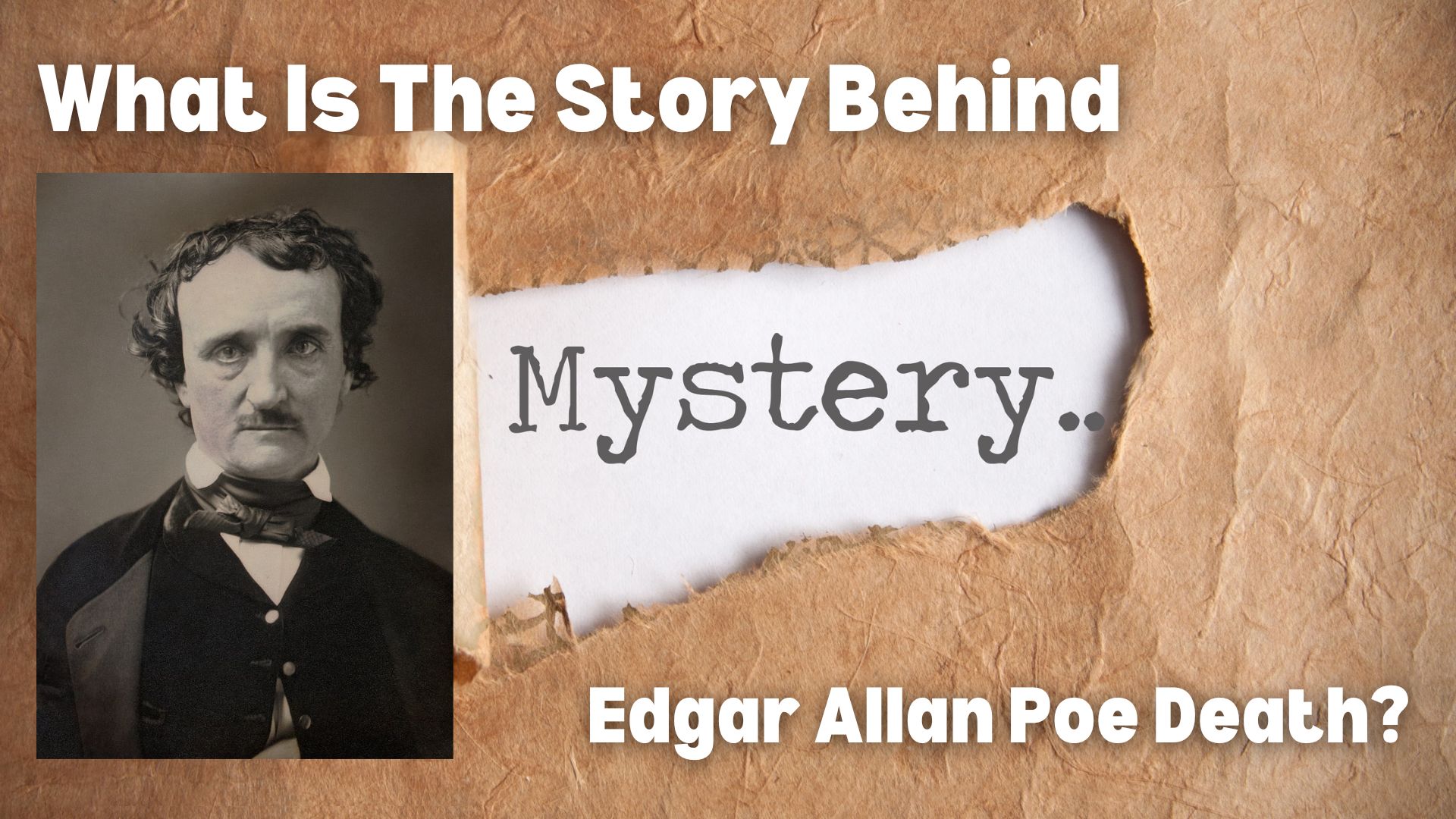Edgar Allan Poe death is still a mystery to this day. And there are so many theories and research on finding the cause of Edgar Allan Poe death. Here, we have talked elaborately about the death of this legend. But we couldn’t speak cause there were so many theories given.
Behind Edgar Allan Poe Death
Edgar Allan Poe died on October 7, 1849, in Baltimore at 40. The cause of his death remains unknown, and several theories have emerged. The most prominent theory is that he died from complications of alcoholism.
Alcoholism: Some people believe the reason behind Edgar Allan Poe death is from complications of alcoholism, such as withdrawal, poisoning, or liver failure. This theory is based on the testimony of Dr. J.E. Snodgrass, who saw Poe at the tavern and claimed that he was drunk and in need of help. Snodgrass also wrote an article in 1857, blaming Poe’s death on alcohol.
However, this theory behind Edgar Allan Poe death has been challenged by other witnesses, such as Dr. John Moran, who attended Poe at the hospital and denied that he had any signs of intoxication or alcohol abuse. Moran also reported that Edgar Allan Poe’s last words were “Lord help my poor soul,” which could suggest spiritual rather than physical distress.
Cooping: Another theory behind Edgar Allan Poe death, is that he was a victim of cooping, a form of electoral fraud in which gangs kidnapped people and forced them to vote multiple times for a particular candidate, often using violence and alcohol. This theory could explain why Poe was found wearing cheap and ill-fitting clothes that were not his own, as well as his disorientation and confusion.
It could also account for the fact that Poe was found near a polling place on election day. However, this theory has been criticized for lacking direct evidence and for being inconsistent with Poe’s physical condition and behavior before his death.
Other theories include disease, substance abuse, suicide, and rabies.
Rabies: A more recent theory is that Poe died from rabies, a viral infection that affects the nervous system and causes symptoms such as fever, agitation, hallucinations, and hydrophobia (fear of water). This theory was proposed by Dr. R. Michael Benitez in 1996, based on a review of Poe’s medical records and the accounts of his illness.
Benitez argued that Poe’s symptoms matched those of rabies and that an animal could have bitten him during his travels. He also noted that Poe refused to drink water at the hospital, which could indicate hydrophobia. However, this theory has been disputed by other experts, who pointed out that rabies is very rare in humans and that Poe’s symptoms could have other explanations.
Despite the many theories surrounding his death, the exact cause remains a mystery.
Some Famous Edgar Allan Poe Stories
Edgar Allan Poe is most popularly known as an American writer, poet, and literary critic. Tales of Mystery and the Macabre was one of his best-known works. Here are some of his most famous stories:
- The Tell-Tale Heart: A story about a murderer’s guilt.
- The Black Cat: A horror story about a cat.
- The Cask of Amontillado: A story of revenge.
- The Fall of the House of Usher: A story about an old house and its secrets.
- The Masque of the Red Death: A story about the horror of the plague.
Edgar Allan Poe Most Famous Work
Edgar Allan Poe is widely recognized for his works of mystery and horror. His most famous work is arguably his poem “The Raven,” which was published in 1845 and achieved instant national fame. The poem tells the story of a man who is visited by a raven who only says the word “Nevermore.”
The poem’s haunting imagery and melancholy tone have made This is already a complete sentence without any errors, but here’s a possible rewrite to make it clearer: “It is considered one of the most popular and acclaimed works in American literature.”
Edgar Allan Poe Interesting Facts
Edgar Allan Poe was a renowned American writer, poet, and literary critic. Let me share some intriguing information about him:
- Poe was born in Boston, Massachusetts, in 1809.
- Poe’s parents were both actors, and they died when he was young.
- John Allan, a wealthy merchant from Virginia, raised Poe.
- He enrolled at the University of Virginia but had to quit due to financial constraints.
- Poe served in the United States Army for two years.
- He married his cousin Virginia Clemm when she was just 13 years old.
- Poe struggled with alcoholism throughout his life.
- The individual passed away in Baltimore in 1849 under puzzling circumstances.
Most Famous Edgar Allan Poe Quotes
Edgar Allan Poe quotes are best for their mysterious behavior and a mix of simplicity and horror. Here are some of the most attractive Edgar Allan Poe quotes:
- Edgar Allan Poe Quotes: “I became insane, with long intervals of horrible sanity”. It is unclear where exactly he said or wrote this, but it is often cited as one of his most famous quotes. The quote has been interpreted in many different ways, but it is generally thought to reflect Poe’s struggles with mental illness and addiction throughout his life.
- Edgar Allan Poe Quotes “All that we see or seem is but a dream within a dream” is from Edgar Allan Poe’s poem “A Dream Within a Dream,” which was first published in 1849 1. The poem questions the nature of reality and whether life is an illusion. The poem has become one of Poe’s most famous works and has been interpreted in many different ways over the years.
- Edgar Allan Poe Quotes “We loved with a love that was more than love” is from Edgar Allan Poe’s poem “Annabel Lee,” which was published in 1849. The poem tells the story of a man who is haunted by the memory of his lost love, Annabel Lee. The line suggests that their love was more intense than what is typically considered love. Poe’s wife, Virginia is considered to be the candidate for the poem’s inspiration.
- Another Edgar Allan Poe’s quote “Those who dream by day are cognizant of many things which escape those who dream only by night”. It is unclear where exactly he said or wrote this, but it is often cited as one of his most famous quotes. The quote is often interpreted as Poe’s belief that daydreaming and imagination are crucial for creativity and insight.
- This quote “That pleasure which is at once the most pure, the most elevating and the most intense, is derived, I maintain, from the contemplation of the beautiful” is from Edgar Allan Poe’s essay “The Poetic Principle,” which he wrote at the end of his life and was published posthumously in 1850. In the essay, Poe argues that poetry should aim to elevate the soul and excite the imagination. He believes that the contemplation of beauty is the most intense and pure form of pleasure that humans can experience. The essay is considered one of Poe’s most important works of literary criticism.
- The quote by Edgar Allan Poe “The nose of a mob is its imagination. By this, at any time, it can be quietly led”. It is unclear where exactly he said or wrote this, but it is often cited as one of his most famous quotes. The quote has been interpreted in many different ways, but it is generally thought to reflect Poe’s belief that the imagination of a group can be easily manipulated by those who seek to control them.

